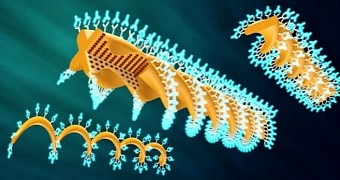Healthcare is one thing, but many people often get sick or injured anyway, so it's not enough. That is why so many doctors and surgeons exist, and why there are several different branches of science that focus on coming up with new treatment methods.
One such treatment method was recently revealed by two professors at the Department of Mechanical and Process Engineering at ETH Zurich.
As one of the top universities in the world, Eidgenössische Technische Hochschule Zürich has had a hand in many scientific advancements.
One of the concepts it has been trying to put into practice for the past few years is that of swimming microscopic robots, or micro-robots for short.
Bradley Nelson, Professor of Robotics and Intelligent Systems, and Christofer Hierold, Professor of Micro and Nanosystems, each lead a research group with a stake in this initiative.
They have come up with micro-bots that can be injected in a person's body and deliver medicine directly to areas affected by injuries or diseases.
The swimming micro-bots
They use magnetic principles to set up microsystems that can hunt down problems with the body. Designing the magnetic, helix-shaped actuators was one half of the key, and 3D printing technology was the other.
The researchers created an additive manufacturing technique that created the micro-robots and coated them with biomedical materials.
First magnetic nanoparticles are inserted into an epoxy resin. After that, a laser beam moves repeatedly over it in a 3D pattern, magnetizing, curing and building a helical structure 60 microns in length and 9 microns in diameter.
Because of this shape, they can swim through the bloodstream and other fluids of the body without being sidetracked. They can even be digitally maneuvered.
What the micro-bots can be used for
New types of surgery, for one thing. Or, rather, alternatives to surgeries, or other procedures that qualify as invasive. The micro-bots essentially behave like flagella. There were previous attempts at creating things of this sort, but they used corkscrew propulsion that wobbled rather badly.
The 3D micro-printing technique proved to be essential in producing the nano objects in a different shape. As a side benefit, the new shape significantly increases the surface (despite the volume being largely similar), allowing the actuators to carry more medication.
We'll be sure to keep an eye out for minimally invasive surgery, targeted drug delivery, single cell manipulation and remote sensing applications based on this breakthrough.

 14 DAY TRIAL //
14 DAY TRIAL // 



